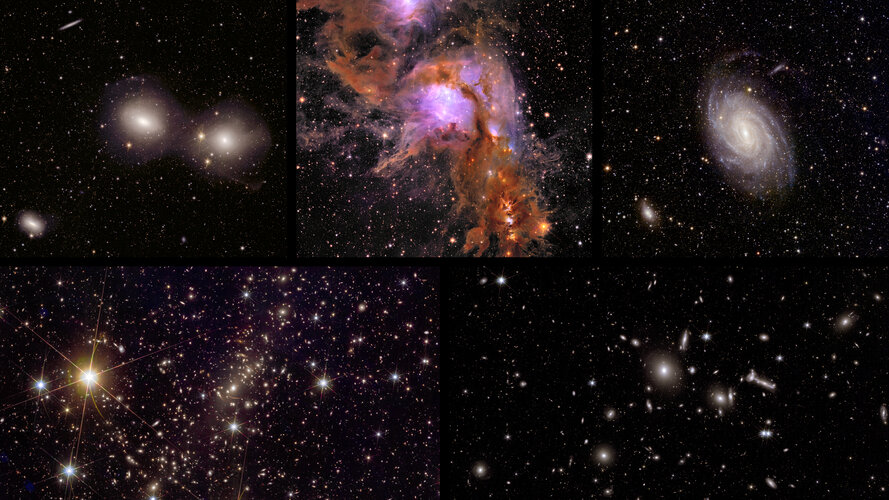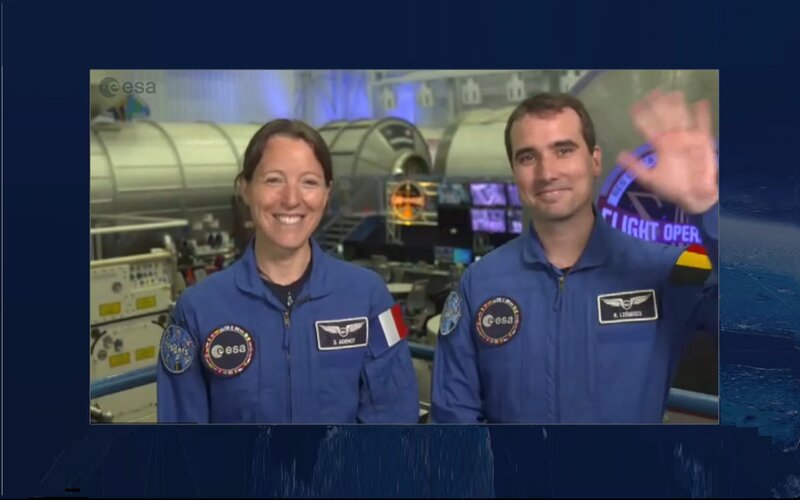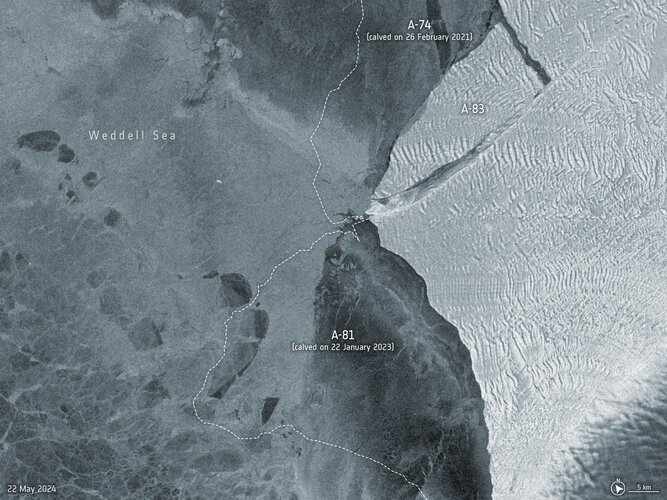
Copernical Team
Black Holes Redirect Powerful Beams Across Space
 Astronomers have discovered that huge black holes are redirecting powerful beams of particles into space. This discovery, made using NASA's Chandra X-ray Observatory and the National Radio Astronomical Observatory's (NRAO) Very Long Baseline Array (VLBA), reveals the widespread impact black holes can have on their surrounding galaxies.
A team of astronomers examined 16 supermassive black h
Astronomers have discovered that huge black holes are redirecting powerful beams of particles into space. This discovery, made using NASA's Chandra X-ray Observatory and the National Radio Astronomical Observatory's (NRAO) Very Long Baseline Array (VLBA), reveals the widespread impact black holes can have on their surrounding galaxies.
A team of astronomers examined 16 supermassive black h Peering into Pluto's hidden ocean
 An ocean of liquid water deep beneath the icy surface of Pluto is coming into focus thanks to new calculations by Alex Nguyen, a graduate student in earth, environmental and planetary sciences in Arts and Sciences at Washington University in St. Louis.
In a paper published in the journal Icarus, Nguyen used mathematical models and images from the New Horizons spacecraft that passed by Pl
An ocean of liquid water deep beneath the icy surface of Pluto is coming into focus thanks to new calculations by Alex Nguyen, a graduate student in earth, environmental and planetary sciences in Arts and Sciences at Washington University in St. Louis.
In a paper published in the journal Icarus, Nguyen used mathematical models and images from the New Horizons spacecraft that passed by Pl
RNA study reveals potential for life in Mars' extreme environments
 People might assume the search for life on Mars ended when NASA's first rovers sent back images of the planet's barren, inhospitable surface. However, as scientists broaden their understanding of the extreme conditions in which life can flourish here on Earth - and expand their notions of what extraterrestrial life might look like - the search for life on Mars continues.
In recent years, N
People might assume the search for life on Mars ended when NASA's first rovers sent back images of the planet's barren, inhospitable surface. However, as scientists broaden their understanding of the extreme conditions in which life can flourish here on Earth - and expand their notions of what extraterrestrial life might look like - the search for life on Mars continues.
In recent years, N Probing for Rocks in an Ice Giant's Core
 Uranus is thought to possess a core of rock and ice beneath its vast frosty atmosphere. Just how much rock lies at the center of this giant world is unknown, but a newly proposed technique could provide a way to find out.
When the Voyager 2 spacecraft whizzed past Uranus in January 1986, it revealed the planet's dark, delicate rings and its pale cyan atmosphere. Precisely what lies beneath
Uranus is thought to possess a core of rock and ice beneath its vast frosty atmosphere. Just how much rock lies at the center of this giant world is unknown, but a newly proposed technique could provide a way to find out.
When the Voyager 2 spacecraft whizzed past Uranus in January 1986, it revealed the planet's dark, delicate rings and its pale cyan atmosphere. Precisely what lies beneath Twelve nations commit to zero debris charter
 Twelve nations have signed the Zero Debris Charter at the ESA/EU Space Council, committing to long-term sustainability in Earth orbit. The European Space Agency (ESA) also signed the charter as an International Organisation (IGO).
The Zero Debris Charter aims to become debris neutral by 2030, first unveiled at the ESA Space Summit in Seville in November 2023.
For the first time, coun
Twelve nations have signed the Zero Debris Charter at the ESA/EU Space Council, committing to long-term sustainability in Earth orbit. The European Space Agency (ESA) also signed the charter as an International Organisation (IGO).
The Zero Debris Charter aims to become debris neutral by 2030, first unveiled at the ESA Space Summit in Seville in November 2023.
For the first time, coun NASA's Psyche Thrusters Propel Spacecraft Toward Asteroid
 The Psyche spacecraft, now beyond Mars, is using ion propulsion to reach a metal-rich asteroid for orbit and data collection.
NASA's Psyche spacecraft, launched on Oct. 13, 2023, from Kennedy Space Center, passed its six-month checkup and is now using electric thrusters to speed towards its target. These thrusters, emitting a blue glow, will propel the spacecraft continuously during its jo
The Psyche spacecraft, now beyond Mars, is using ion propulsion to reach a metal-rich asteroid for orbit and data collection.
NASA's Psyche spacecraft, launched on Oct. 13, 2023, from Kennedy Space Center, passed its six-month checkup and is now using electric thrusters to speed towards its target. These thrusters, emitting a blue glow, will propel the spacecraft continuously during its jo SpaceX launches Starlink satellites in second mission of the day
 SpaceX launched another 23 Starlink satellites into low-Earth orbit on Wednesday, the same day the space company launched a group of U.S. spy satellites from California.
Falcon 9 lifted off one minute behind schedule, at 10:36 p.m. EDT, from Space Launch Complex 40 at Cape Canaveral Space Force Station in Florida.
"Merlin engine ignition and liftoff of Falcon 9," SpaceX wrote Wed
SpaceX launched another 23 Starlink satellites into low-Earth orbit on Wednesday, the same day the space company launched a group of U.S. spy satellites from California.
Falcon 9 lifted off one minute behind schedule, at 10:36 p.m. EDT, from Space Launch Complex 40 at Cape Canaveral Space Force Station in Florida.
"Merlin engine ignition and liftoff of Falcon 9," SpaceX wrote Wed ESA's Euclid celebrates first science with sparkling cosmic views

Today, ESA’s Euclid space mission releases five unprecedented new views of the Universe. The never-before-seen images demonstrate Euclid’s ability to unravel the secrets of the cosmos and enable scientists to hunt for rogue planets, use lensed galaxies to study mysterious matter, and explore the evolution of the Universe.
First Space Station missions for new ESA astronauts
 Video:
00:18:15
Video:
00:18:15
ESA Director General Josef Aschbacher announces the first two astronaut missions for the new ESA astronaut class of 2022 on the first day of the Space Council, held in Brussels on 22 and 23 May 2024.
ESA's most recent class of astronauts selected in 2022 includes Sophie Adenot, Pablo Álvarez Fernández, Rosemary Coogan, Raphaël Liégeois, and Marco Sieber. They recently completed one year of basic training and graduated as ESA astronauts on 22 April at ESA's European Astronaut Centre in Germany, making them eligible for spaceflight. During their missions aboard the International Space Station, ESA astronauts will engage
Iceberg A-83 breaks free
 Image:
An iceberg roughly the size of the Isle of Wight has broken off the Brunt Ice Shelf in Antarctica on 20 May.
Image:
An iceberg roughly the size of the Isle of Wight has broken off the Brunt Ice Shelf in Antarctica on 20 May. 
